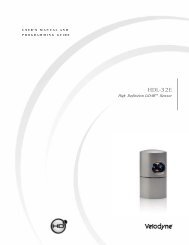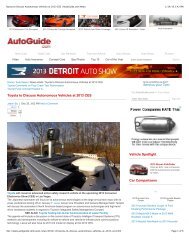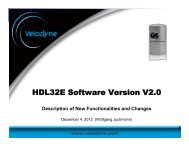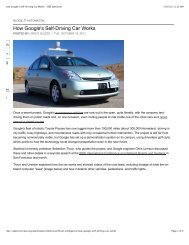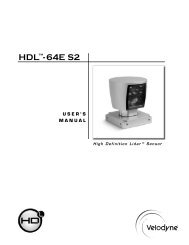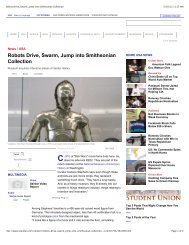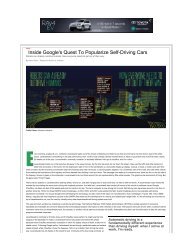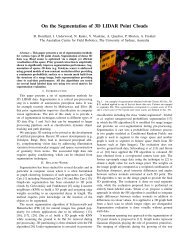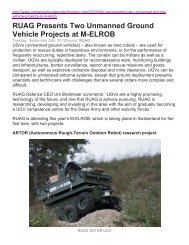HDLâ¢- 64E - Velodyne Lidar
HDLâ¢- 64E - Velodyne Lidar
HDLâ¢- 64E - Velodyne Lidar
You also want an ePaper? Increase the reach of your titles
YUMPU automatically turns print PDFs into web optimized ePapers that Google loves.
PART 10: INSTRUMENTATION AND CALIBRATION<br />
Describe those tests and controls used to ensure that the reported product will<br />
remain in compliance with the Federal laser product performance standard during<br />
its useful life. Items to be addressed include:<br />
10.1 List the instruments you use to determine compliance of the reported<br />
product with the standard. Describe these instruments or provide copies of<br />
specification sheets. Identify each detector's aperture size, if applicable.<br />
Not applicable. However, a Sony CCD-TRV28 infrared vision camera was used<br />
to verify the calculations that were performed earlier in this report. The<br />
camera provided the laser image pattern and it was used to determine the<br />
point of maximum intensity and thus verify the calculations.<br />
Is additional information attached? ( )Yes ( X )No<br />
10.2 Indicate how the measurement system collects or accounts for the total<br />
radiant energy or power specified in Section 1040.10(e).<br />
Not Applicable<br />
Is additional information attached? ( )Yes ( X )No<br />
10.3 Provide a measurement error analysis (for all sources of error identified) and<br />
an uncertainty statement for all measurement data reported.<br />
Not Applicable<br />
Is additional information attached? ( )Yes ( )No<br />
NOTE: If it is clear from the measurement data, including the total estimated<br />
uncertainty, that the levels are well below the applicable class limit, then an<br />
error analysis and uncertainty statement are not required. For, example, an<br />
error analysis and uncertainty statement would not be required for a 1.5 milli<br />
watt HeNe laser product classified in Class IIIa.<br />
10.4 Provide instrument calibration schedules and indicate how your instruments<br />
are calibrated (e.g., calibrated by your company against a working standard,<br />
returned to the manufacturer of the instrument, sent to an independent<br />
calibration laboratory).<br />
Not Applicable<br />
Is additional information attached? ( )Yes ( )No<br />
NOTE: If your laser product operates at a level closely approaching a specified<br />
limit, high accuracy and traceability to the National Institute of Standards and<br />
Technology (previously known as the National Bureau of Standards) are<br />
important.<br />
- 36 -




